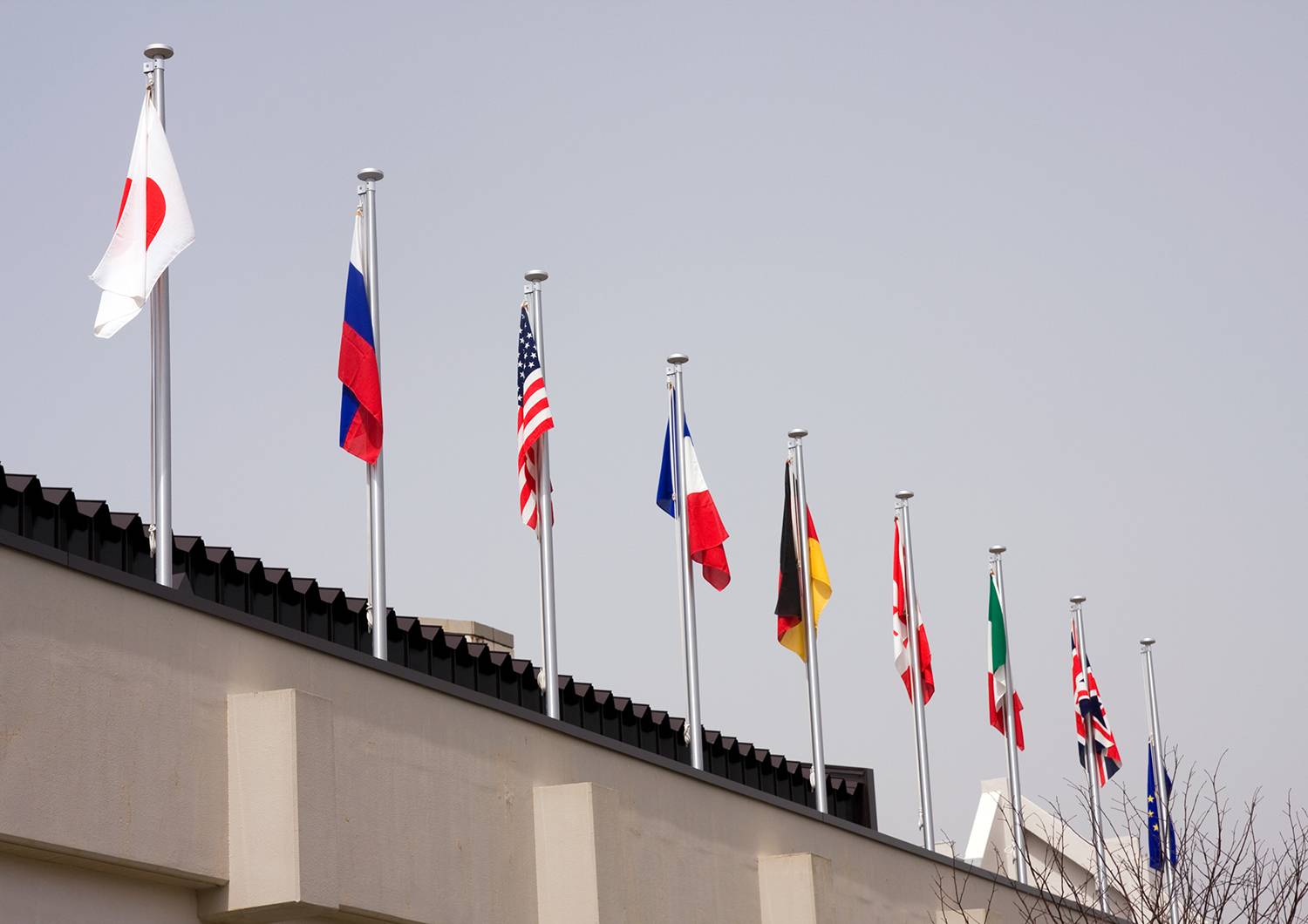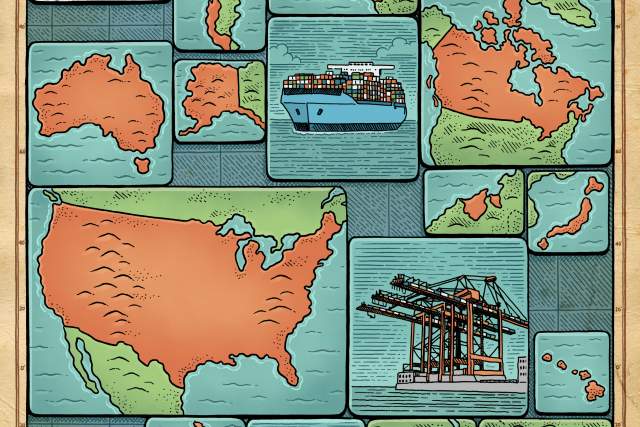Slaughter & Rees Report: A Timely Antidote to the Death of TPP
"The early stages of Trump's trade policy is an opportune moment to step back and provide some big-picture perspective on how the global economy has evolved in the past—and is likely to continue evolving in the future."

Welcome to the dawn of a troubling new era in trade policy for the United States—and the world as well.
Just two days after being inaugurated as president, Donald Trump formally withdrew the United States from negotiations over the Trans-Pacific Partnership, a comprehensive trade liberalization measure involving 11 other nations. A few days later, he proposed a 20 percent import tax on goods from Mexico, building on his pledge to renegotiate, or potentially withdraw from, the North American Free Trade Agreement (NAFTA), which as a candidate he labeled “the worst trade deal maybe ever signed anywhere.”
These moves, and countless others being contemplated, could destabilize large parts of the global economy. The death of TPP means missing out on sizable future gains (see this handy fact sheet on what those gains would have been and our earlier missive arguing why TPP should be approved). Ripping up NAFTA would mean undoing gains that have already accrued to consumers and companies. Annual U.S. trade with Canada and Mexico is about $1 trillion and accounts for about 30 percent of all U.S. imports and exports. The ripple effects of the U.S. protectionism could also be felt globally—raising prices on goods, disrupting the cross-border supply chains that power the global economy, and undermining the world’s rules-based trading system.
This inauspicious start to Trump’s trade policy is an opportune moment to step back and provide some big-picture perspective on how the global economy has evolved in the past—and is likely to continue evolving in the future. An illuminating book has recently been published on this precise topic, “The Great Convergence: Information Technology and the New Globalization.” Its author, Richard Baldwin, one of the world’s foremost international economists, discussed this book in a post-election appearance at the Peterson Institute for International Economics in Washington.
World trade began to accelerate in 1820 as steam engines spread and transportation costs fell, making it economical to ship goods throughout the world. This is what Baldwin calls “the old globalization,” and the biggest beneficiaries were the countries that in the 1970s would come together in the G7: the United States, the United Kingdom, Canada, Italy, France, Germany, and Japan. These countries accounted for about 20 percent of global GDP in 1820, but their share steadily rose across the generations to reach about 70 percent in the early 1990s.
But that’s when so much started to change, as Baldwin carefully documents. The revolution in information and communications technology (ICT) began to drive down the cost of communicating and sharing information. ICT, says Baldwin, “made it feasible to separate complex activities over distance, and it was the vast wage gaps that had arisen during the great divergence that made it profitable.” Thus the decades-long surge in international trade and investment—spurred, in part, by the Information Technology Agreement, a pact signed in 1996 by dozens of countries that eliminated all tariffs on hundreds of IT capital goods, intermediate inputs, and final products.
Baldwin says that underpinning all of this activity was something more fundamental: knowledge—more specifically, what he calls “knowledge offshoring.” As Baldwin puts it, “ICT enabled G7 firms to precisely control what goes on inside developing nation factories. So it was possible to coordinate complicated activity over great distances and once that became possible, they did it, and then to make the whole thing work together, they moved their knowledge across.” And that’s helped drive 25 years of convergence between the G7 countries and the rest of the world. Today, the share of global GDP generated by G7 countries is lower than it was in 1900.
That 25 years of convergence was enabled by policies throughout the world that fostered trade and resisted protectionism. But with the United States turning its back on open trade, and potentially sparking an outbreak of protectionism throughout the world, is this convergence destined to end? Baldwin doesn’t think so. He says the knowledge differences between countries that drive globalization still exist, and the movement of knowledge across borders isn’t about to come to an end, pointing out that “it’s driven forward by information technology, which is not really based on what governments do.”
At a time where so much heat and rancor surround debates about globalization, leaders in government and business alike all would benefit from accessible, research-based analysis like that of Richard Baldwin. Consider it a timely antidote to the death of TPP.

